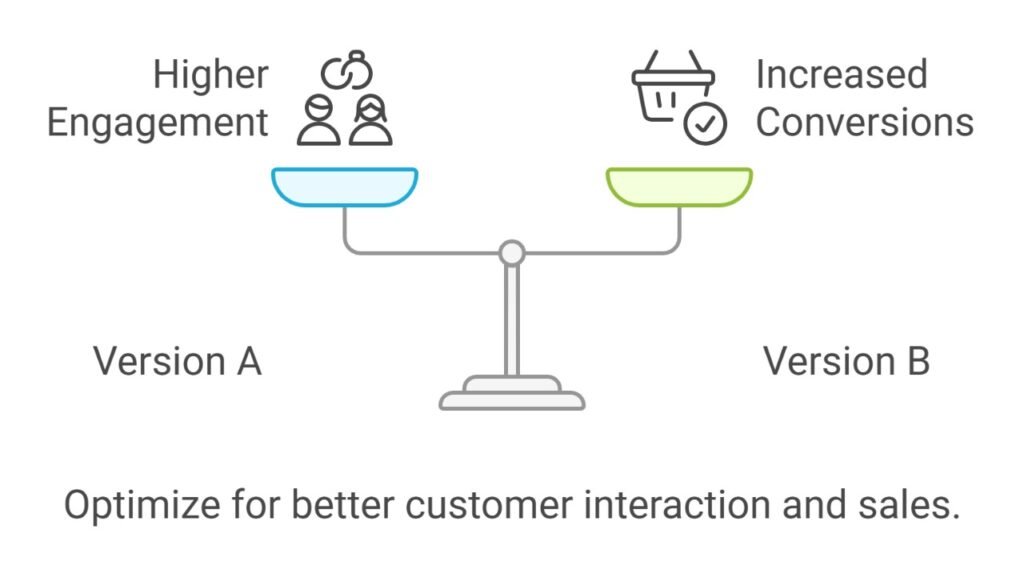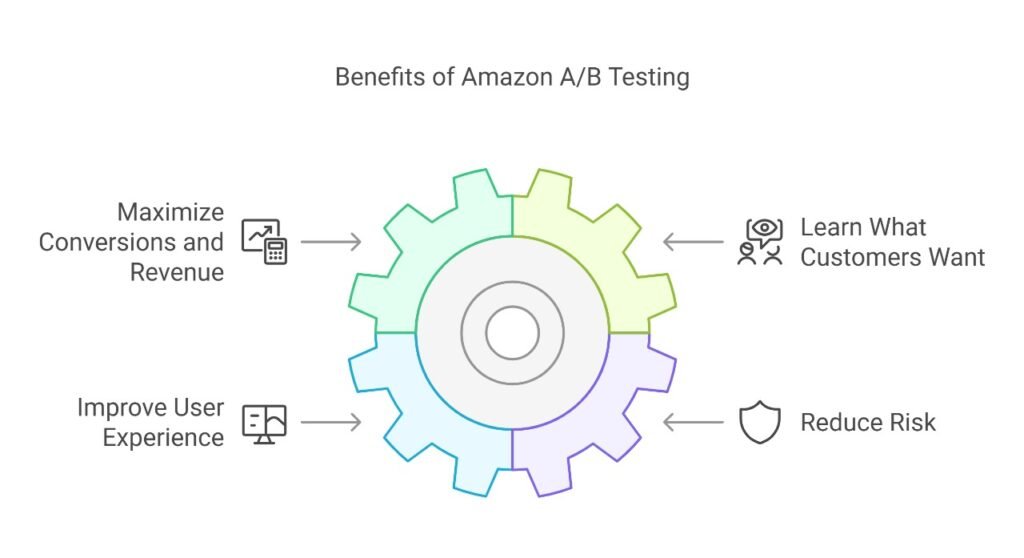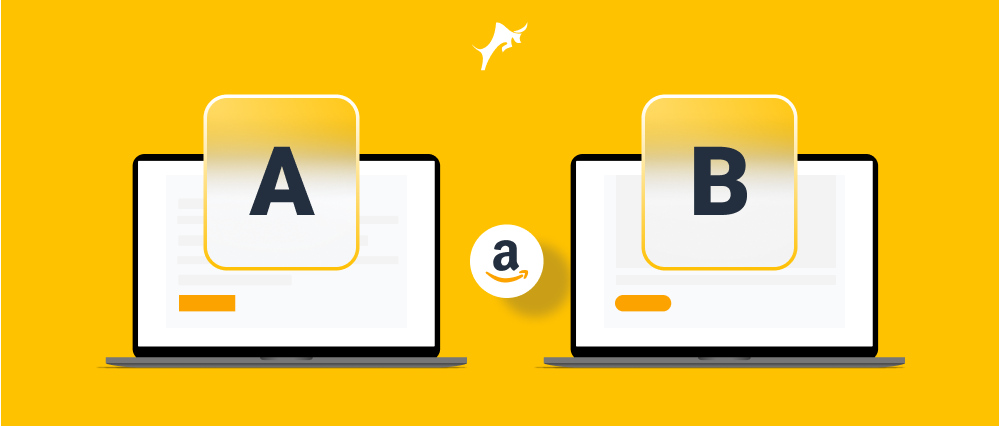Article
Why A/B testing is important on Amazon it’s advantageous how it works
In today’s competitive e-commerce world, understanding your customer’s preferences and behavior is crucial in optimizing sales and boosting brand presence. The largest online marketplace, Amazon, holds both a massive opportunity and a unique set of challenges for sellers. With millions of products competing for attention, it is essential to find ways to stand out and convert views into sales. This is where A/B testing comes in.
A/B Testing on Amazon Explained
A/B testing, also known as split testing, is the process of comparing two versions of a product detail page, advertisement, or marketing strategy to see which one performs better in terms of customer engagement, conversions, and sales. An example would be an Amazon seller testing two different versions of a product title, image, or price to determine which one produces more clicks or purchases.
A/B testing lets you make data-driven decisions based on real user behavior, rather than blind guesses or assumptions.

How A/B Testing Works on Amazon
A/B testing on Amazon usually follows these steps:
Identify What to Test. First, identify which of the elements of your Amazon listing or campaign you want to test. This can be things like:
- Product titles
- Bullet points and descriptions
- Product images
- Pricing strategies
- Ads (sponsored product ads, display ads, etc.)
- A+ content or Enhanced Brand Content (EBC)
Create Variations: Develop at least two different versions of the element you want to test. For example, you could have two product images: one with a white background and another with a lifestyle shot that shows you actually using the product.
Divide the Audiences: The A/B testing tools at Amazon are allowing for split testing in your audiences with a feature such as Amazon Brand Analytics or the “Manage Your Experiments” tool, enabling you to divide your audiences between two versions-half view A, while the other half will see version B.
Measure Results: After a long test period, collect data on how each variation performed. You can compare conversion rates, click-through rates (CTR), sales volume, and other relevant metrics to determine which version is more effective.
Make Informed Decisions Once the test is over, analyze your data and apply the insights to help you improve your Amazon strategy. You can implement the best-performing variation as a default, and if necessary, continue refining and testing new ideas.
Why Amazon A/B Testing Matters
Maximize Conversions and Revenue
The final goal of an A/B test is to generate more conversions: to turn visitors into buyers. Small tweaks to your product listings—such as tweaking the product title or changing the main image—can make a big difference in conversion rates. A/B testing will help you discover these high-leverage changes and improve your sales-generating activity.
Learn What Customers Want
Every customer is different, and what works for one segment may not work for another. A/B testing enables you to learn what resonates with your target audience. For example, some customers might want their detailed descriptions, while other customers are more interested in visual content. By performing A/B testing, you will discover these preferences and craft listings that will better serve the interests of potential buyers.
Improve User Experience
It’s not just about the number of sales you’re going to increase; it’s also about the experience you are going to improve. Through A/B testing, you’ll know how changes impact your customer’s behavior, which helps make your Amazon listings user-friendly. Whether you need to improve your product images, simplify descriptions, or reduce page load times, A/B testing helps you give your customers a better shopping experience, which could result in increased customer satisfaction and loyalty.
Reduce Risk
When you start to make changes on product listings or ad strategies without any kind of testing, there’s risk. A/B testing would therefore be the one that could reduce risk when ideas are being put out into a smaller group and once the result is acquired; then you can abandon and try another version right away with minimum damage caused by a version to your sales.
With millions of sellers competing on Amazon, getting an edge is critical. A/B testing can help you stay ahead by continuously refining your listings and marketing strategies based on real-world data. Over time, this can result in higher visibility, better conversion rates, and ultimately, greater success on Amazon.

Advantages of A/B Testing on Amazon
Improved Listing Performance: Testing different elements of your product pages and ads can help pinpoint what works best and refine listings for maximum impact.
Data-Driven Decisions: A/B testing eliminates guesswork, making decisions based on concrete data rather than assumptions.
Increased Profits: Even the smallest increase in conversion rates can result in massive profit growth, especially when multiplied over a large volume of traffic.
Better Customer Insights: A/B testing gives you valuable insight into what motivates your customers to click, purchase, and engage with your listings.
Scalable Optimization: As you continue running tests and optimizing your Amazon listings, you can establish a process of continuous improvement that scales as your business grows.
Conclusion
A/B testing is an invaluable tool for Amazon sellers looking to maximize performance and gain an edge in this very crowded marketplace. Through the use of A/B testing of different variations of key elements like product images, titles, and descriptions, you can optimize your listings to have higher engagement and increase sales. The insights derived from A/B testing enable you to understand your customers better, reduce risk, and make informed decisions to help achieve business success. If you’re not already using A/B testing, it is time to start—that’s because on Amazon, every click counts!
